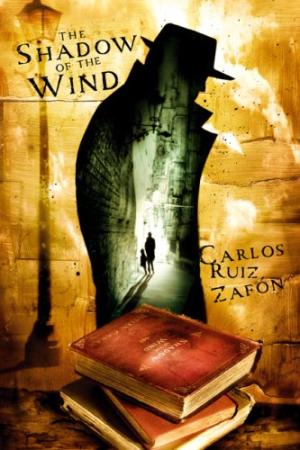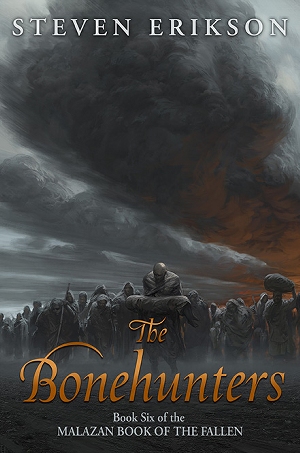 Not really a review of any kind but I’m going to write a few disconnected comments. Here’s the poof that when I don’t actually care about a book I end up reading faster. I read the last 2/3 of this in just a few days, while the first 1/3 I had read a month or two ago before being sidetracked toward JR by Gaddis (that’s just a hint of my erratic patterns).
Not really a review of any kind but I’m going to write a few disconnected comments. Here’s the poof that when I don’t actually care about a book I end up reading faster. I read the last 2/3 of this in just a few days, while the first 1/3 I had read a month or two ago before being sidetracked toward JR by Gaddis (that’s just a hint of my erratic patterns).
I had this book years ago, when it was very popular. I read some 50/60 pages, as I usually do, then shelved it. I didn’t like at all the writing, all the characters were caricatures, all the plot was filled with simple tropes, and I did feel an intrusive “wind” in the form of the writer trying to unsubtly push reader’s emotions where he wanted them. It felt artificial and clumsy. But the guy at ofblog loved the stuff and he has a kind of sophisticated taste. I knew this was part of a bigger project of four books, and I’m always curious when an author drives toward some kind of “higher purpose”. This cycle is complete now, in Spanish, in Italian, it looks like the English version isn’t coming until 2018.
So this time I began reading the book with more determination to see it through, the whole first book to have at least a good idea about what it is all about, and what it wants to drive to. For the first 1/3 I found nothing different than the first time. The book failed to engage me, the silly tropes are pervasive. There’s just too much effort making every single character into a quirky, eccentric figure because otherwise they’d be boring and not fitting the pages of a ‘book’. It just feelt an elaborate but ultimately fake and grotesque stage.
But then it started to get good. It didn’t become any different, it didn’t become any more than that, but the recipe started to make sense and work. For the first 1/3 not only I didn’t like it, but I also couldn’t figure out why it was so widely appreciated. Reading the rest of the book made me understand more that part. The story becomes a fair bit more dense and complex but, more importantly, it mixes a lot of genres and does it fairly well. It’s good in the sense that it gets engaging and quick to read. “Mystery deepens” is the driving mechanic. There are various “blocks” that are dropped and that build and build, so you want to keep turning the pages. It works because instead of keeping a mystery out of reach until you get to a final revelation, in this case instead the flow of knowledge builds up relentlessly through the whole second half of the book. It’s one huge, constant info-dump. Very dense. But it works and isn’t tiring because it’s all still steeped into intense emotions and the tragic lives of multiple characters all together in a tangle of plot.
All of that is done well. It’s just obvious the incredible amount of work behind the book. The sheer amount of stuff packed in, and the intense tragedy that keeps a reader locked in, driving toward a “surface”. It’s a fun, engaging read and gets you in the center of this whirlpool of characters. But? But, while fun, it isn’t very meaningful to me. One thing is why and how I enjoyed it, another is my opinion now that I’ve finished it. I think it’s all pre-digested stuff. The book is all built around tropes coming from different genres, sprinkled with a gothic, surrealist atmosphere. As I said, it’s well done, but it’s also nothing more than that. It feels to me like the writer really loved these books he read, and wrapped them into this story he built. But I doubt that this mixture he made is anything more than an “homage” to authors he loved to read. Nothing more that this book has to say beyond this sort of nostalgic love.
I’m (binge)watching Twin Peaks for the first time now, sorry for the forced parallel but Twin Peaks shares a somewhat similar intent and I think shows the difference. When the post-modernism works it takes what came before, all the ingredients, but spinning them so everything moves at a different speed, and the result is completely different. To me Twin Peaks is nothing more than parody of soap operas used to make fun of the public who loved them. Public that then proceeds to take it seriously, and so falling completely in the trap. Becoming a laughing stock because Twin Peaks, really, is just trolling. But Twin Peaks also takes *itself* seriously (having a cake and eating it too). Enough to create its own new dimension. Enough to make people forget its derivative-ness, and make believe Twin Peaks STARTED something new. The mix of old tropes creates a whole new level. Knowing the old to make the new. Today Twin Peaks re-emerges, and no one even remembers it was just a parody. Transfiguration.
(and all three of my current interests, The Leftovers, Twin Peaks and The Shadow of the Wind, all three seem to have a central mystery that actually isn’t there at all. Just a lot of clever and less clever misdirection)
The Shadow of the Wind doesn’t seem to emerge from its homage, from its borrowed love for the things past. It loops back, but it closes itself. Its energy is borrowed energy. A shadow of things past that produces no new life. And it matters because its plot and structure would suggest exactly the opposite, and it fails, so radically, at the true heart. This central idea of the book that you can “redeem” a story in the past gone wrong, with a story in the present that goes well. The finale distributing trivial sweet candies to every minor and major character. Characters all used as tools and then discarded through convenient, momentary compassion so that the one adopted by the readers can have his sweeter implied future. It feels to me so hypocritical. To suggest you can clean it all. The world is bleak and full of pain, but hey, there’s a shadow writing hand here taking care of its characters and making sure it all ends in positivity. The new life that the book produces explicitly (metaphorically) just isn’t new life that the book produces for the reader. It’s a book made of ashes. A mix of tropes that is well done, but that produces nothing new or meaningful. A well done mimicry, but I don’t feel is any more than that. And the overall message? It rings hollow and false to me. It doesn’t in ANY way address the tragedy shown. It simply dismisses it through rhetoric, through the fact this is a book, indeed a fake stage where things were pre-arranged to make a point. A point that has no substance or meaning. Theatrics.
Though I wanted to read it also to figure out what the overall cycle of four books would be about, this part eludes me. The first book is complete. There’s really no element of the story that might suggest there’s more to it. It closes even too neatly. I have absolutely no idea how the author plans to wrap this in an overall larger story because it seems it’s already all squished to nothing. And so I don’t really know if I should care to read more, if there’s something that might interest me. In fact, since this book offers nothing in the overall trajectory points to the possibility there’s more substance ahead. Who knows. For the time being I’m content. I’m not rushing to read the next book.


